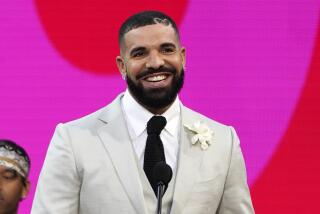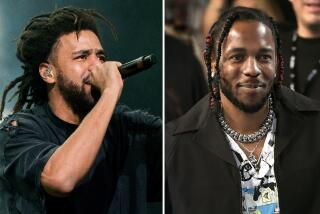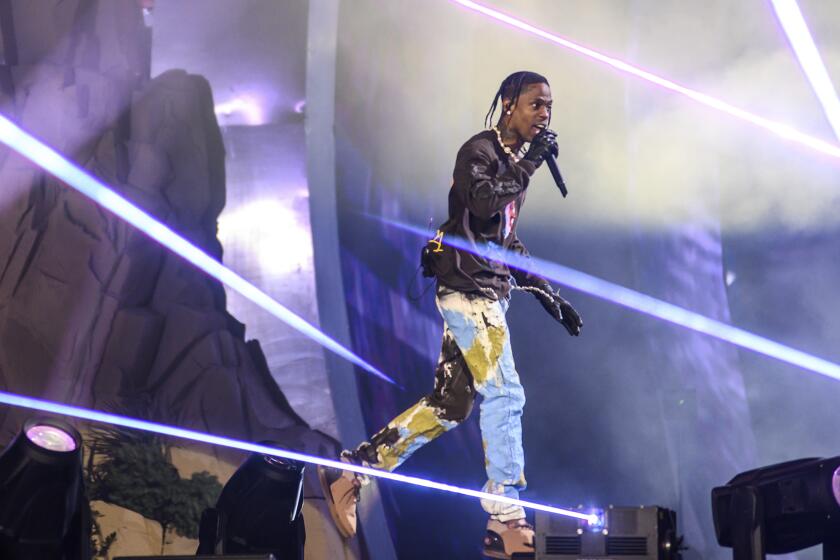Earl Sweatshirt stakes claim as a producer on new album

Among the surprises to arrive within Los Angeles rapper Earl Sweatshirt’s striking new album, “I Don’t Like ... I Don’t Go Outside,” are the production credits. Unlike most hip hop releases that feature as many producers as there are tracks, Earl’s second studio album only credits two people: Left Brain, a kindred member of the Odd Future crew, produced one track. And Earl produced the other nine.
Minimal, dark and minus many of the snare snaps and tribal beats that have come to define big production hip hop, Earl’s work is smaller, more intimate, a less studio creation than a bedroom project.
For those who have witnessed Earl in action, this shouldn’t be news. Unlike many strike-it-rich musicians buying mansions and Teslas, for the last few years Earl’s lived in a modest apartment a stone’s throw away from one of the busiest intersections in Los Angeles. He made these beats in that complex; to understand the sound, you should know the setting. Behind an otherwise anonymous door not too far away from the mayhem of Hollywood Boulevard is an isolated apartment with the hint of a beat bumping.
During the rollout to his 2013 studio debut, “Doris,” Earl invited me over to talk. It was midsummer, the record was done and the artist was looking ahead to festival season. Inside an apartment complex with a labyrinthine layout and hundreds of units, he spoke of about “Doris” but he didn’t seem too enthused about the attention or the scrutiny.
Rather, from time to time as he paced he seemed more interested in his musical workstation -- a computer and a keyboard/sampler. As he answered questions he added and subtracted from a beat he was concocting. Over the next couple of hours Earl casually built a track, one that hummed with bottom end bass and looped a simple piano melody. Taking big swigs from a gallon jug of orange juice, he spoke in cussed sentences about his day-to-day life. All the while he orbited his workstation, tweaking the beat to make it roll a little smoother.
“I don’t really ... with rap,” he said as he hit some buttons on the keyboard. “I would much rather do ... like this all day. You can hit your head against the same wall a bunch of times, especially now.”
He thoughtfully spoke of expectations, both his own and his fans’. His eyes lit up, and his voice grew animated, when I asked him whether at age 19 (he’s now 21) he contemplated his creative future in terms of a career arc.
“Hell yeah,” he said firmly. “I never thought I would make a beat, ever, when I was 16. But things change instantly without you having any idea they’re going to change at all. So I’m on for the ride. And I’m sure that a lot of the people that are in it for the long run have the same mentality towards it, are just open to whatever the ... comes their way. “
When he began really paying attention to other artists’ productions, he explained, “you start realizing the flaws of that more and more and realize that this album isn’t really that good. And I get that more than anyone else does because I’m starting to lose the optimism I have towards music.”
That’s depressing, I replied, and he corrected himself. It was hip hop he had issues with, not all music.
In hindsight, what he said next was a portent, and serves as a striking reminder of both how young Earl is and how much creative enthusiasm he put into his new album.
“I trust my taste, though, in the sense that I know when [something is] good, so at the end of the day, if I feel like if something sounds good, I can trust it.”
He may sound glum on “I Don’t Like ...” but that tone is one he designed himself, one more brick on the path toward refined -- and autonomous -- self-expression.
Follow Randall Roberts on Twitter: @liledit
More to Read
The biggest entertainment stories
Get our big stories about Hollywood, film, television, music, arts, culture and more right in your inbox as soon as they publish.
You may occasionally receive promotional content from the Los Angeles Times.







